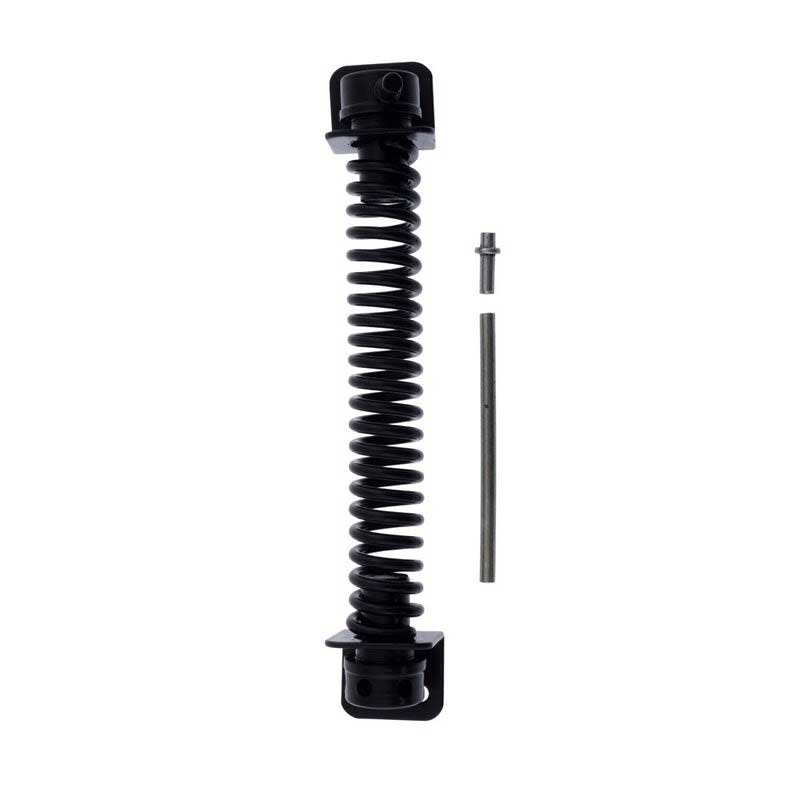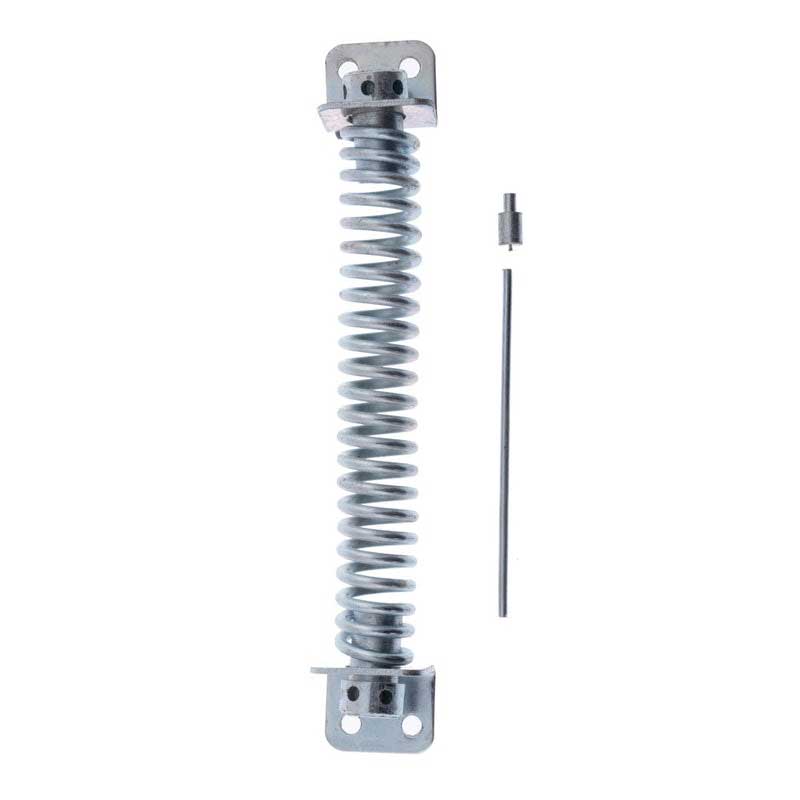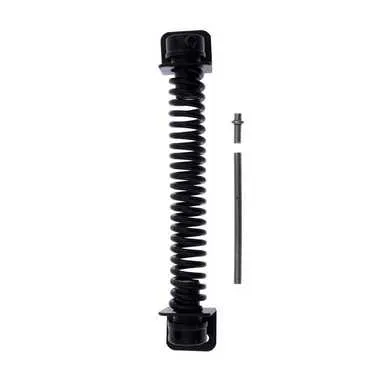Whether you’re struggling to keep your sheep in the field or your children are excitedly running around and you want to keep them as safe as possible in their surroundings, a gate spring can be a fantastic investment to help you keep your gate closed. Check out what a gate spring is and find out how you can fit a gate spring below!
Table of contents
 What is a gate spring?
What is a gate spring?
A gate spring, also known as a gate closer, is a particular type of gate hardware that is used to ensure that a gate remains closed once it swings shut, ensuring an automatic closure. This is done by using a spring for tension and can be ideal for those with livestock or any who have general ownership of land with a gate for security purposes.
Thanks to the mechanism, this ensures a longer-lasting gate and reduces the risk of excessive damage from it being moved by strong winds.
Another benefit of gate springs is that they can help the gate close more smoothly. This in turn can help reduce the risk of injury to passersby. So if you need a gate for domestic or commercial use, including a garden gate or a school entrance gate, a gate spring can be an ideal choice.
It’s also worth noting that a gate spring is typically more suited to smaller metal or wooden gates. If you need something for a larger gate, look to our gate furniture range to see what alternatives our collection has in store.
What are spring-loaded gate wheels?
Spring-loaded gate wheels are an extra step when it comes to the opening and closing of a gate. Also known as caster wheels or gate casters, this is a type of hardware that comes with a spring and a wheel. They are particularly popular when being used to support heavy timber gates as they operate. Better yet, they make opening and closing the gate even easier when it comes to uneven flooring. With the added wheel, you needn’t worry about the gate scraping across the ground as it is raised to allow for impact reduction to the gate or floor as it opens and closes.
Typically you can find fixed or swivel wheels depending on your requirements. However, fixed is recommended for wider openings, with swivel being preferred for smaller openings. In some cases, the wheel is attached to the spring which means it can automatically adjust while it moves across uneven ground.
As a result, you can combine your spring-loaded gate wheel(s) with a gate spring and have a gate that opens with improved efficiency in the long run.
How to fit a gate spring
A gate spring can be installed on a wooden or metal gate. Here is your guide to installing a gate spring on each type of gate.
How to fit a gate spring on a wooden gate
To fit a gate spring to a wooden gate, you will need the following:
- Drill
- Gate spring
- Rivets
- Screws
Now, onto the fitting!
Step one: Determine the hand side of the gate
Find which side is the ‘hand’ side of the gate as this is the side most gate springs are placed on. Most of the time a gate spring will be attached to the hinge, but it can also be attached to the frame if the gate has one. For this example, we will be covering how to fit a gate spring to the hinge.
Step two: Attach the top part of the gate spring
Use the drill to remove one of the existing screws from the hinge on the gate. Then place the top part of the gate spring against the hinge and fix that part in place with the screw you removed. At this same stage, you will need to pre-drill a hole for a second screw at the top of the gate spring, using a new screw to keep it in place.
Note: Make sure the adjustment on the gate spring sits at the top before fixing it in place.
Step three: Secure the bottom part of the gate spring
Place the bottom part of the gate spring against the fence post and attach it in place with screws.
Step four: Install a rivet/peg
These next stages will include how to tension a gate spring. Firstly, you will need to put a rivet/peg in the bottom hole of the gate spring to keep it in place.
Step five: Adjust the tension
Using a tension key (also known as a tension bar), typically provided with the gate spring, insert it into the holes in the top end of the gate spring to adjust the tension in the spring system. Sit the second rivet/peg in place in the hole at the top of the spring to test the new tension by opening the gate to see if it closes at your desired speed. You may need to do this a few times to get the appropriate closing speed you want from your gate.
Step six: Secure the tension
Once the right tension has been found, you can leave the rivet/peg in to keep the tension as needed. This can stop the point at the top of the system from turning. Failing to do so can result in a loss of tension.
There you have it! A newly installed gate spring!
How to fit a gate spring on a metal gate
The only difference when fitting a gate spring to a metal get is the screws you use to do so. So make sure you have suitable screws that can penetrate the metal surface as failing to do so can risk damage to your gate or even injury.

Fitting a gate spring with confidence
Fitting a gate spring can vary in difficulty depending on factors such as the type of gate, the existing hardware and the installer’s familiarity with the process.
While basic installations may be straightforward with the right tools and instructions, more complex setups or unforeseen challenges like alignment issues or incompatible hardware can increase the difficulty level.
Bottom line:
Proper preparation and attention to detail are crucial to ensure a successful installation.
Not sure which gate spring you need or looking for other types of gate hardware? Check out our range to discover a variety of products. Alternatively, contact our friendly customer service team using the helpline or live chat to get further advice on your purchase.








